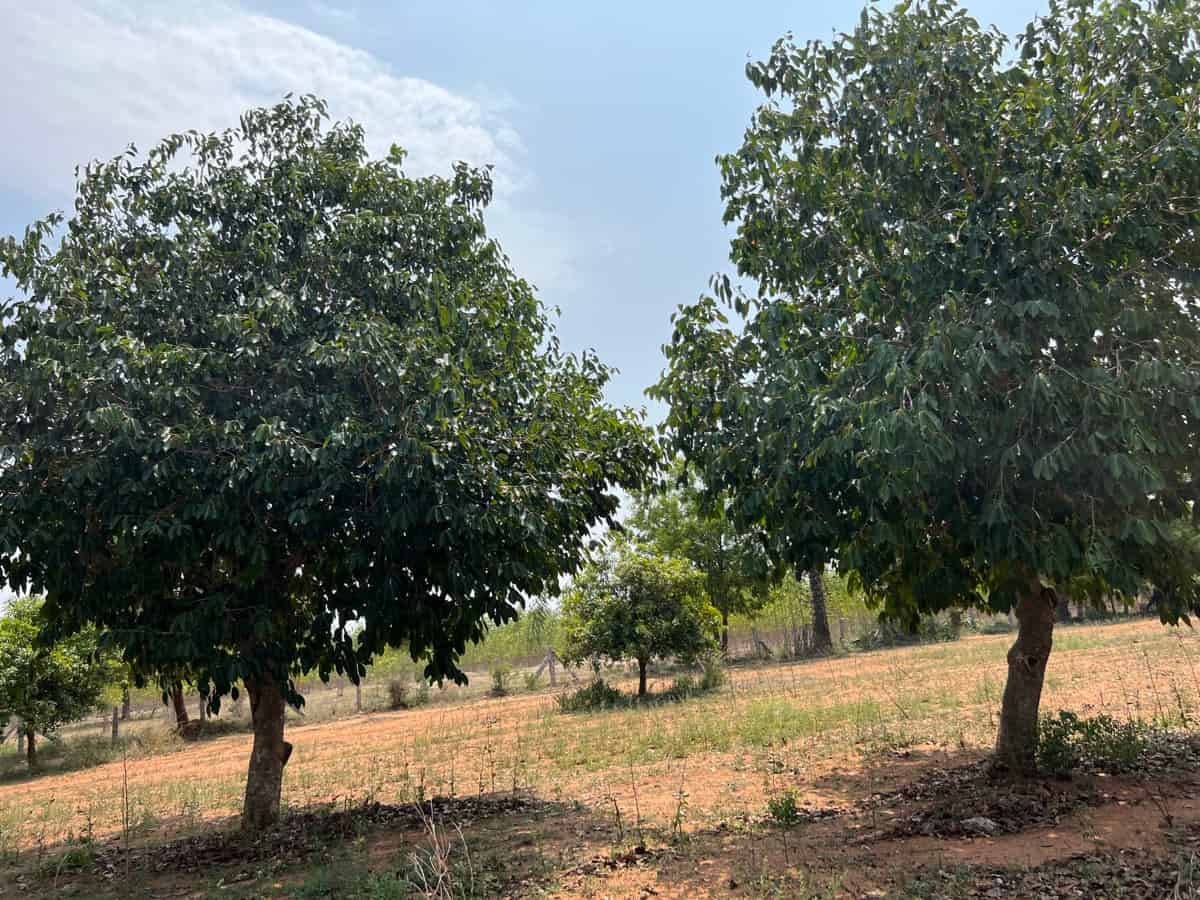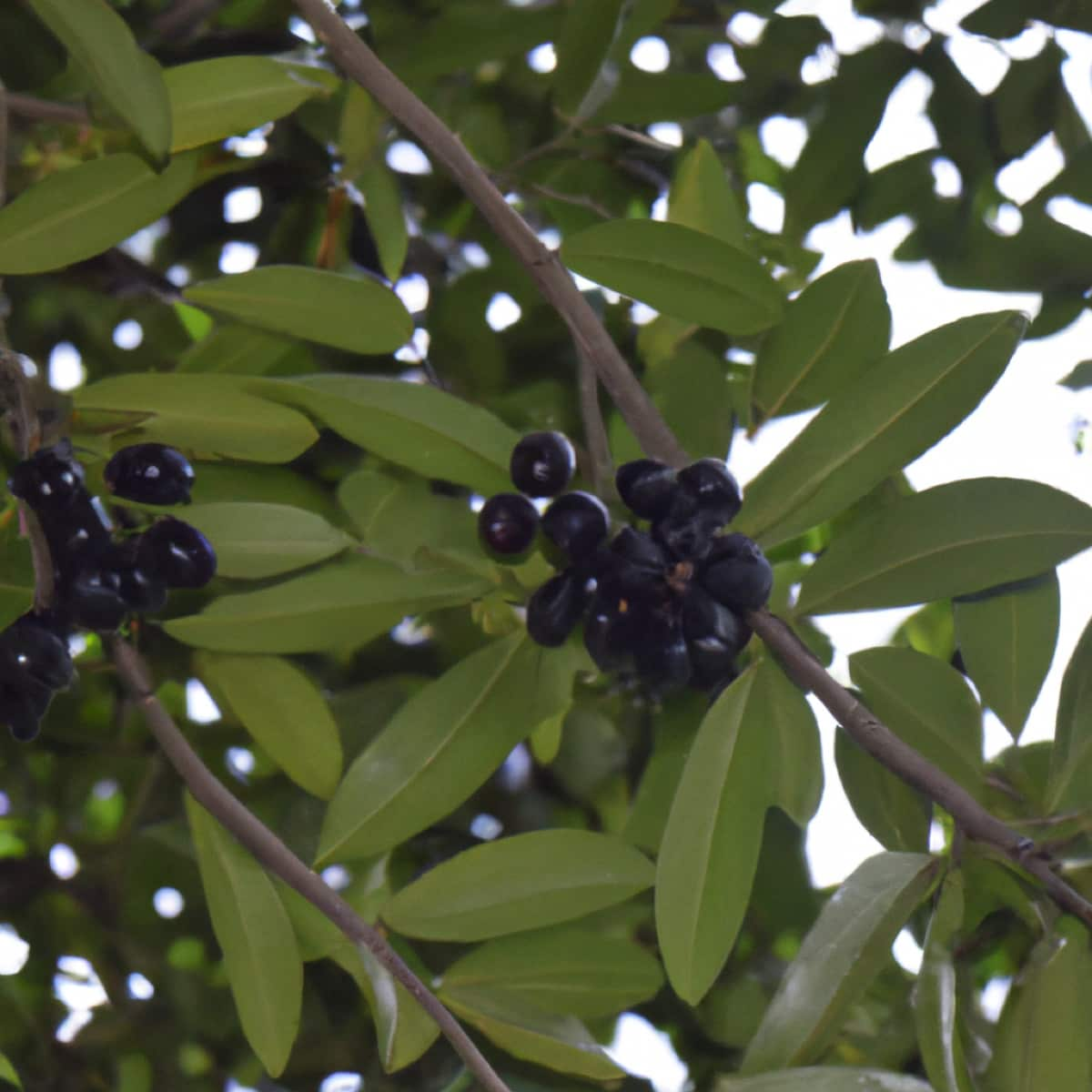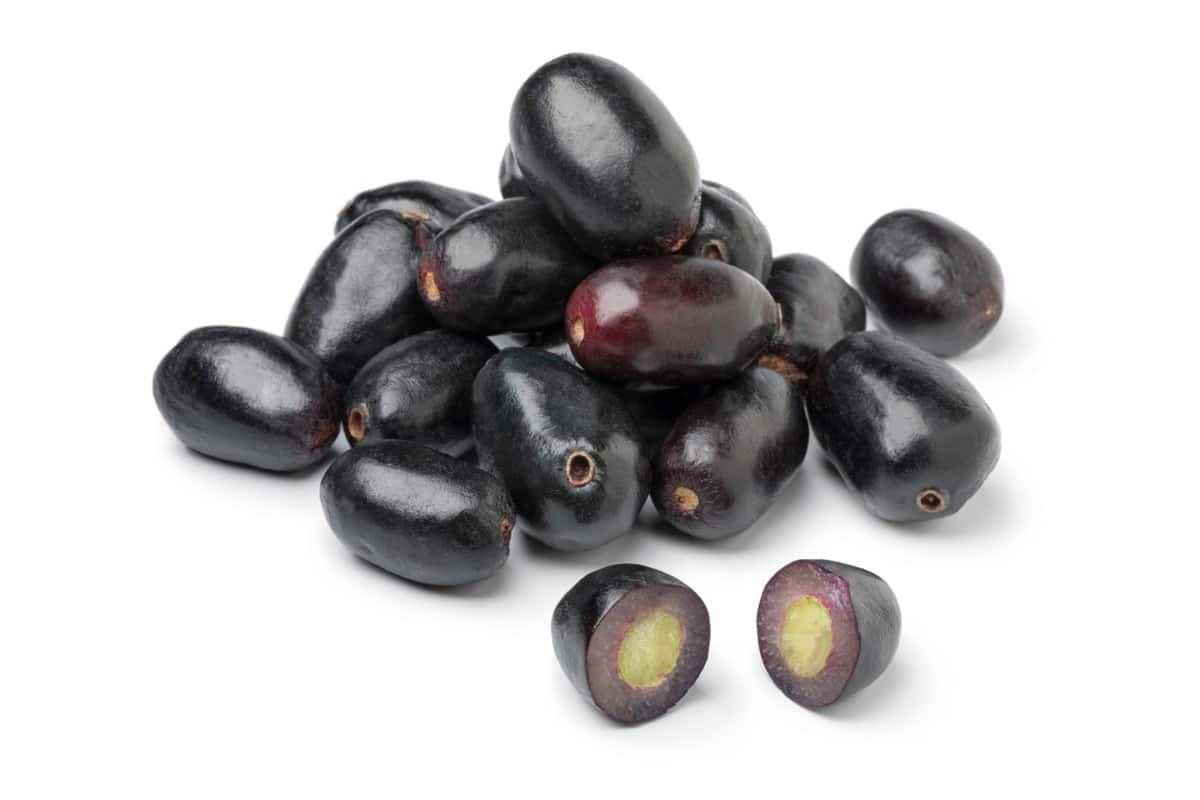Welcome to our comprehensive guide on Java plum (Jamun) farming! This blog will delve into the economics and project report of cultivating Java plums on a one-acre farm. We’ll explore the cost and potential profits and provide insightful analysis to help you make informed decisions. Whether you’re a seasoned farmer or a beginner, this blog is packed with valuable information to help you succeed in Java plum farming.

What is Java Plum/Jamun Farming?
Java plum farming, also known as Jamun farming, refers to the cultivation of Syzygium cumini, a tropical fruit tree from the Indian subcontinent. This farming practice involves planting, nurturing, and harvesting Java plum fruits, known for their rich purple color, sweet-tart taste, and numerous health benefits. Syzygium cumini, or Java plum or Jamun, is a tropical evergreen tree from the Myrtaceae family. Native to the Indian and Southeast Asia, it can grow up to 30 meters in height and live for over a century.
Though considered invasive in some regions, it is valued for its fruit, timber, and ornamental properties. The fruits are sweet or slightly acidic, consumed fresh, and used for making sauces, jams, juice, and other products. The tree’s wood is water-resistant and used in construction. The leaves have nutritional value and are fed to livestock. Flowering occurs from March to April, and the fruits ripen from May to June, turning from green to pink, then crimson red, and finally black with a unique flavor.
Market and Demand for Java Plum/Jamun Farming
Java plum holds significant market demand globally, with India being the highest producer. India dominates the Java plum market due to its favorable climate and extensive cultivation. The fruit’s popularity stems from its unique flavor, health benefits, and use in various culinary applications such as juices, jams, and desserts. The increasing awareness of the fruit’s nutritional value and medicinal properties has contributed to its growing demand in domestic and international markets.
Best High-Yielding Variety for Commercial Java plum/Jamun Farming
These varieties offer a range of characteristics such as fruit size, taste, color, yield, and disease resistance, allowing farmers to choose the most suitable variety for their commercial Java plum farming needs.
| Variety | Fruit Description | Taste | Yield |
| Raja Java plum | Large, oblong, dark purple fruits | Sweet and juicy | High |
| CISH J – 45 | Oval-shaped, dark blue to black fruits | Juicy and sweet | High |
| CISH J – 37 | Deep black fruits with firm texture | Sweet | High |
| Story | Small, deep purple fruits with sour taste | Sour | High |
| Priyanka Goma | Pleasantly sweet fruits with a bitter aftertaste | Sweet with a hint of bitterness | High |
| Bhado | Typical-sized, deep purple fruits | Slightly sweet with a hint of sourness | High |
Java Plum/Jamun Farming Economics and Project Report
Economics analyzes the cost and potential profits associated with cultivating Java plum on a commercial scale. It involves assessing factors such as land preparation, planting material, irrigation, fertilizers, labor, pest control, and marketing. A well-prepared project report provides a comprehensive overview of the farming venture, including investment requirements, expected returns, break-even analysis, and financial viability.
It helps farmers make informed decisions, secure financing, and evaluate the profitability of Java plum farming. A detailed project report is a roadmap guiding farmers toward successful and sustainable Java plum cultivation.
Project Report of 1-Acre Java Plum/Jamun Farming: Cost and Profit Analysis
Initial Investment Required for a 1-acre Java plum/Jamun Farm
The initial Investment required to establish a 1-acre Java Plum (Jamun) farm is 1.5 to 2 lakhs, including land preparation and infrastructure development costs. This involves clearing the land, leveling, fencing, and constructing irrigation systems.
Land Preparation and Infrastructure Development Cost of 1-acre Java plum/Jamun
The expenses may include clearing the land, leveling the ground, fencing the perimeter, and constructing irrigation systems. Land preparation and infrastructure development costs can range from Rs. 25,000 to Rs. 30,000.
In case you missed it: How to Grow and Care for Java Plum/Jamun: A Step-By-Step Comprehensive Guide for Beginners

Expenses Involved in Planting and Growing Java plum/Jamun Trees on a 1-Acre
The expenses involved in planting and growing Java Plum/Jamun trees on a 1-acre farm include procuring high-quality saplings, digging pits for planting, and applying organic manure. The cost of planting and initial care can range from Rs. 20,000 to Rs. 40,000.
Average Cost of Irrigation and Water Management for a 1-Acre Java plum/Jamun
It may include the cost of installing drip irrigation or sprinkler systems, water pumps, and the electricity or fuel required for irrigation. On average, irrigation and water management costs can range from Rs. 20,000 to Rs. 30,000.
Cost to Procure High-quality Java Plum/Jamun Saplings for a 1-Acre
The cost of procuring high-quality Java Plum/Jamun saplings for a 1-acre farm can vary depending on the variety, age, and source of the saplings. The average cost per sapling can range from Rs. 30 to Rs. 100 based on variety. Therefore, for a 1-acre farm with 45-65 trees, the cost of saplings can range from Rs. 10,000 to Rs. 20,000.
Ongoing Expenses for Fertilizers, Pesticides in 1-Acre Java plum/Jamun Farm
The ongoing expenses for fertilizers and pesticides in a 1-acre Java Plum/Jamun farm depend on the type of fertilizers and pesticides used, as well as the frequency of application. On average, the annual expenses for fertilizers and pesticides can range from Rs. 15,000 to Rs. 20,000.
Labor Requirement for the Maintenance and Harvesting of 1-acre Java plum/Jamun
The labor requirement for the maintenance and harvesting of a 1-acre Java Plum/Jamun farm depends on various factors, including the age of the trees and the intensity of operations. The average annual labor cost can range from Rs. 30,000 to Rs. 40,000.
Typical Costs Associated With Pruning, Training, and General Care of 1-acre Java Plum/Jamun Trees
The costs associated with pruning, training, and general care of 1-acre Java Plum/Jamun trees can include labor, tools, and materials expenses. These costs can range from Rs. 8,000 to Rs. 14,000 annually.
Disease and Pest Management Cost Affect the Overall Expenses of Java Plum/Jamun Farm
The cost of disease and pest management in a Java Plum/Jamun farm depends on the area’s prevalence of pests and diseases. It may include the cost of pesticides, insecticides, and hiring professional services for disease management. The annual disease and pest management cost can range from Rs. 5,000 to Rs. 8,000.
How Long Does Java Plum/Jamun Farm to Reach Full Production and Profitability
Java Plum/Jamun trees typically take 5-8 years to reach full production and profitability. During the initial years, there may be limited or no yield, resulting in lower profitability. It is important to consider the cost of maintenance, labor, and other expenses during this period.
Average Yield of Java Plum/Jamun Per Acre and How Does It Impact Profitability?
The average yield of Java plum (Jamun) per acre is around 3800-4000 kilograms annually. The tree’s age influences the yield, with a fully mature tree capable of yielding nearly 100 kilograms annually.
Current Market Price for Java Plum/Jamun and How It Affects the Potential Profit
The current market price for Java Plum/Jamun can vary depending on location and demand. On average, the market price ranges from Rs. 80 to Rs. 120 per kilogram. This price directly impacts the potential profit of Java Plum/Jamun farming.
Government Subsidies for Java Plum/Jamun Farming
Government subsidies for Java Plum/Jamun farming aim to support and incentivize farmers in this sector. These subsidies include financial assistance, grants, tax incentives, and subsidized loans. The specific subsidies and their eligibility criteria may vary from region to region, and farmers are encouraged to check with local agricultural authorities for available programs.
In case you missed it: Project Report of 1-Acre Pomegranate Farming: Production Economics, and Cultivation Cost and Profit Analysis

Cost of Cultivation of 1-Acre Java Plum/Jamun Farming
| Expense Category | Cost Range (in Rs.) |
| Land Preparation and Infrastructure Development | 25,000 – 30,000 |
| Planting and Growing Java Plum/Jamun Trees | 20,000 – 30,000 |
| Irrigation and Water Management | 20,000 – 30,000 |
| Procurement of High-quality Java Plum/Jamun Saplings | 10,000 – 20,000 |
| Ongoing Expenses for Fertilizers and Pesticides | 15,000 – 20,000 |
| Labor Requirement for Maintenance and Harvesting | 30,000 – 40,000 |
| Pruning, Training, and General Care of Java Plum/Jamun | 8,000 – 14,000 |
| Disease and Pest Management | 5,000 – 8,000 |
| The total cost of Cultivation (Approx.) | 150,000 – 350,000 |
| Category | Amount in (Rs.) |
| Gross income | 580,000 |
| Total Expenses (including Harvesting) | 200,000 |
| Net Profit from 1-acre Jamun Cultivation | 380,000 |
Profits and Return to Investment from 1-Acre Java Plum/Jamun Farming
In Java Plum (Jamun) farming, the profitability and yield depend on the farming structure and the type of trees planted. Traditional farming with 50 trees per acre may have different profits than high-density farming. Grafted plants yield slightly less than non-grafted seedlings. The time from plantation to the first profitable harvest is 6–8 years, and full maturity may take up to 10 years.
Taking an average yield of 85 kilograms per plant with 100 plants in a traditional Jamun plantation, even with a below-average yield of 50 kilograms per plant and a rate of Rs. 100 per kilo, the farmer can still make a gross revenue of Rs. 2.25 lakhs, with a meagre profit of Rs. 45,000 per year, considering labor and expenses at Rs. 1.5 lakhs.
Conclusion
1-acre Java Plum/Jamun farming requires an initial investment of approximately 1.5 to 2 lakhs. The total cost of cultivation, including various expenses, can vary within a specific range. With an average yield and market price, the potential profit of 2.5 lakhs can be significant, making it profitable.
- Feed Your Flock for Less: Top 10 Tips to Save on Chicken Feed
- Ultimate Guide to Ossabaw Island Hog: Breeding, Raising, Diet, and Care
- Hatching Answers: The Top 10 Reasons Your Chickens Aren’t Laying Eggs
- Eggs and Economics: Breaking Down the Cost of Raising Backyard Chickens
- Defend Your Greens: Proven Methods to Keep Iguanas Out of Your Garden
- Ultimate Guide to Cinnamon Queen Chicken: A Comprehensive Guide for Beginners
- Ultimate Guide to California Tan Chicken: Breeding, Raising, Diet, Egg-Production and Care
- Ultimate Guide to Marsh Daisy Chicken: Breeding, Raising, Diet, and Care
- 10 Types of Chicken Farming Businesses You Can Start for Profits